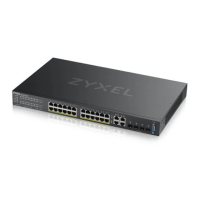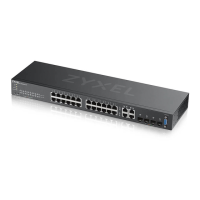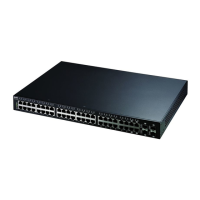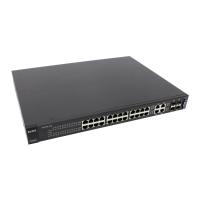GS2220 Series User’s Guide
363
C HAPTER 42
Sta tic Ro ute
42.1 Sta tic Ro uting O ve rvie w
This chapter shows you how to configure static routes.
The Switch uses IP for communication with management computers, for example using HTTP, Telnet, SSH,
or SNMP. Use IP static routes to have the Switch respond to remote management stations that are not
reachable through the default gateway. The Switch can also use static routes to send data to a server
or device that is not reachable through the default gateway, for example when sending SNMP traps or
using ping to test IP connectivity.
The Switch usually uses the default gateway to route outbound traffic from computers on the LAN to the
Internet. To have the Switch send data to devices not reachable through the default gateway, use
static routes.
For example, the next figure shows a computer (A) connected to the Switch. The Switch routes most
traffic from A to the Internet through the Switch’s default gateway (R1). You create one static route to
connect to services offered by your ISP behind router R2. You create another static route to
communicate with a separate network behind a router R3 connected to the Switch.
Fig ure 274 Example of Static Routing Topology
42.1.1 Wha t You C a n Do
• Use the Sta tic Ro uting screen (
Section 42.2 on page 364) to display the link to the IPv4 Sta tic Route
screen.
• Use the IPv4 Sta tic Route screen (Section 42.3 on page 364) to configure and enable an IPv4 static
route.

